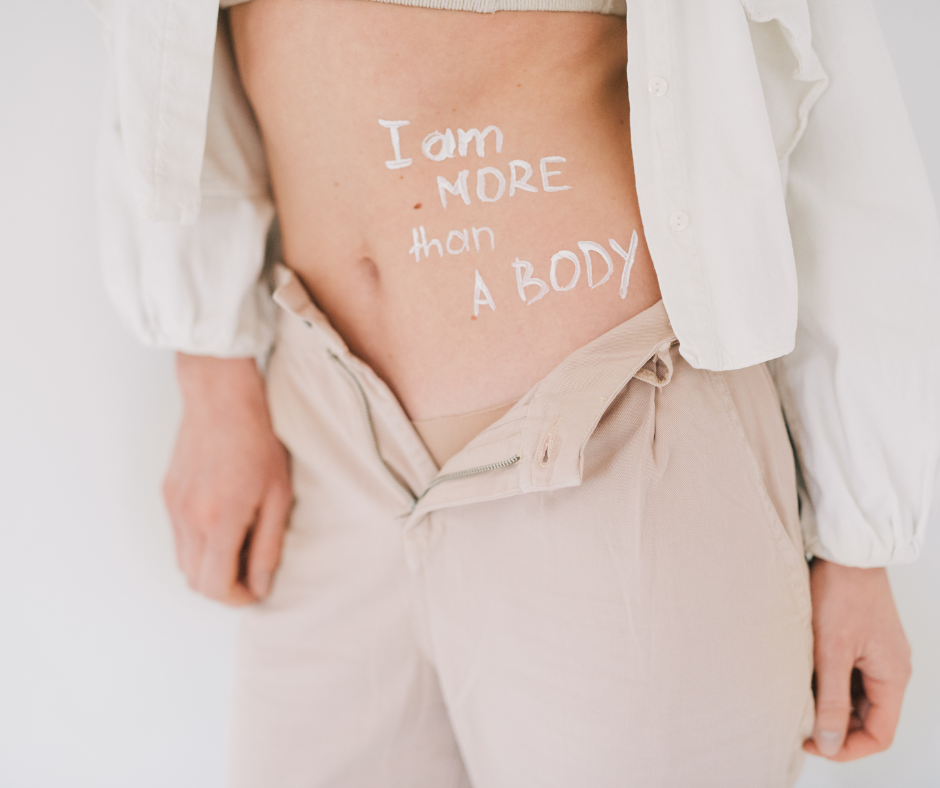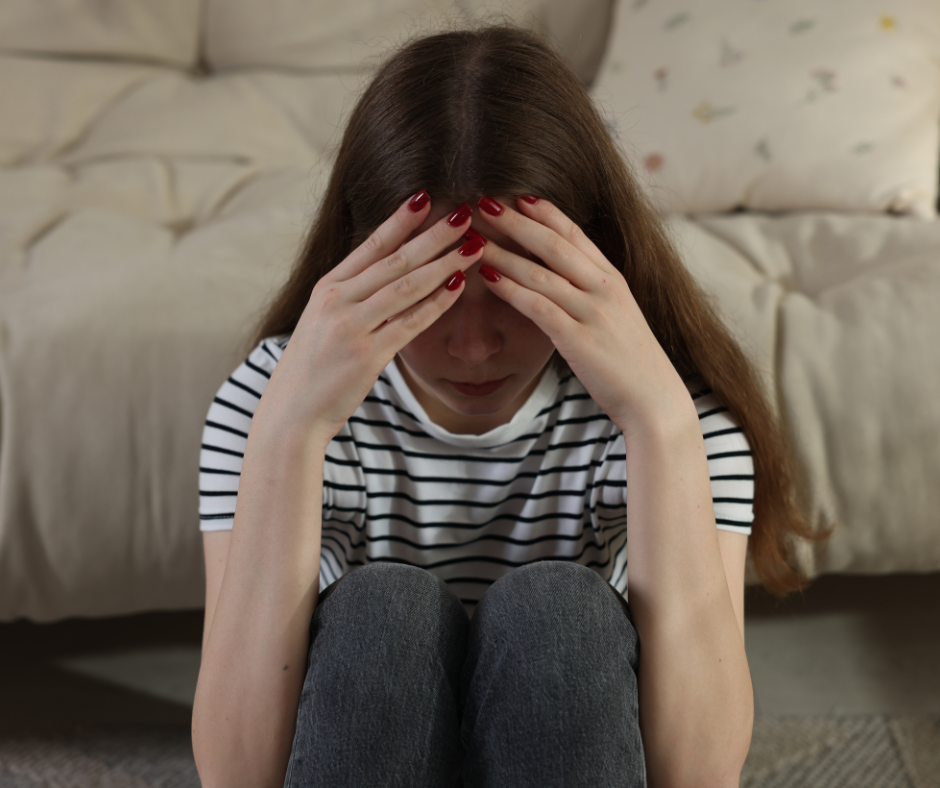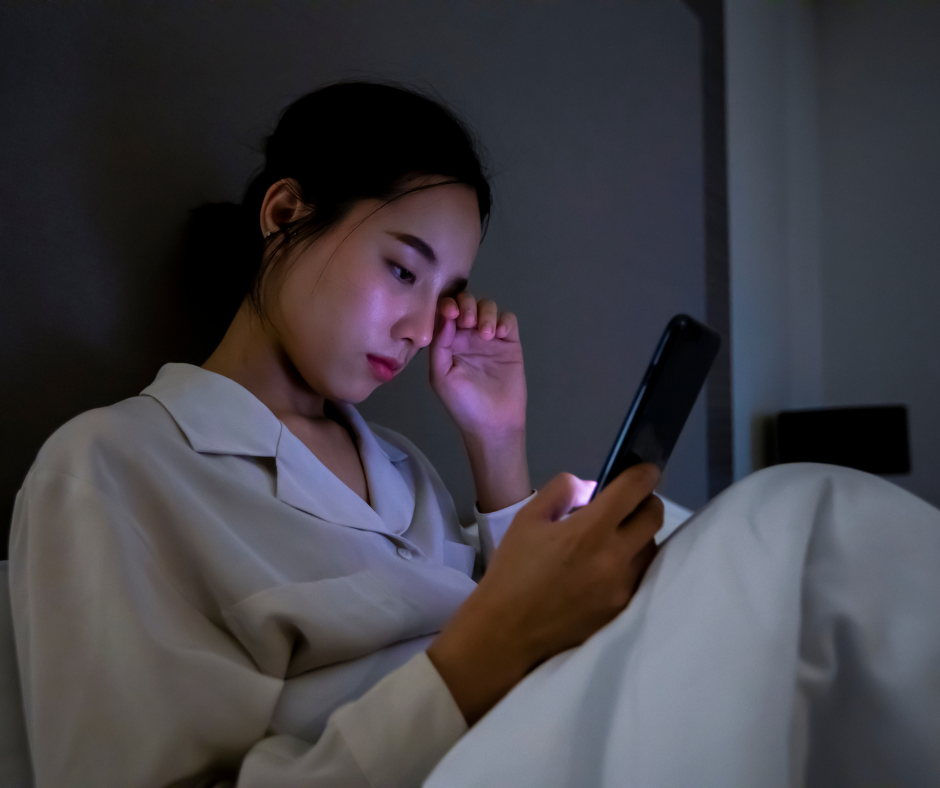“Do I Really Look Like That?”: Body Dysmorphia in the Age of Social Media
You know that feeling when you open your front camera and suddenly think, “Wait… is that really me?”
Or when you see a tagged photo of yourself and feel your stomach drop because the image doesn’t match what you thought you looked like? That quiet wave of self-consciousness — mixed with confusion, embarrassment, maybe even shame — can feel all too familiar.
You might tell yourself, “I know social media isn’t real,” but still feel a pull to fix, edit, or hide parts of yourself. And that’s the strange paradox of living in a world that constantly reflects us back to ourselves: we know it’s filtered, yet it still impacts our sense of worth. This is where body dysmorphia can quietly begin to grow — not always in the extreme ways we imagine, but in the everyday discomfort of feeling disconnected from your own body or reflection.

When You Start Seeing Yourself Like a Stranger
Body dysmorphia isn’t just about “wanting to look better.”
It’s about feeling trapped in the space between how you think you look and how you wish you could look.
For many people, it’s subtle. It might show up as:
- Needing to retake a selfie over and over until it feels “bearable”
- Avoiding mirrors for a few days because they suddenly feel cruel
- Comparing your face to others online even though you “know” filters are involved
- Feeling a constant pressure to be “photo-ready,” even in casual moments
It’s not vanity. It’s distress — and it’s fueled by an environment designed to keep you looking, comparing, and striving for visual perfection.
Social media has turned self-perception into a performance, and for those already sensitive to appearance-related anxiety, it can feel like living inside a 24/7 audition for acceptance.
The “Filter” Problem Isn’t Just Digital
Let’s talk about the deeper filter — the one in your brain.
Each time you see yourself through a certain lens (a mirror, a selfie, a Zoom screen), your brain takes note. Over time, it starts prioritizing what you don’t like. You zoom in mentally on the pimple, the unevenness, the roundness, the “imperfection.”
What started as a neutral reflection becomes a distorted memory.
Even if you delete social media, those mental filters can stick around. Because it’s not just about what we see — it’s about what we’ve learned to see as wrong. Your nervous system is trained by repetition. When every scroll reminds your brain that certain bodies get praise, likes, and attention, it starts associating safety and belonging with those traits — and rejection with your own natural variation.
That’s not your fault. That’s neuroplasticity doing its job in a culture that monetizes insecurity.
The Emotional Toll of Constant Comparison
Body dysmorphia often hides behind phrases like:
- “I just want to feel confident.”
- “I’m not insecure, I just want to look my best.”
- “If I could fix this one thing, I’d feel better.”

But beneath those statements is usually something more tender — a quiet grief for the peace you used to have before appearance became a full-time mental job.
You might notice:
- Avoiding social outings when you’re not feeling “your best”
- Feeling your mood drop after seeing others post photos
- Using filters not because you want to, but because you can’t not
- Feeling guilt or frustration that you even care this much
And the worst part? The shame of knowing it’s “just social media” but still feeling affected — as if awareness alone should cure a biological and emotional reaction.
Awareness is a start, but self-compassion is the medicine that actually helps your brain rewire.

10 Therapist-Approved Ways to Reconnect with Your Real Reflection
Here are some grounded, nervous-system-informed ways to start softening your relationship with your image — and to slowly build safety in your own body again.
1. Mirror Minutes — Without Correction
Pick a short time (one to two minutes) to look at yourself in the mirror each day without adjusting, fixing, or judging.
Notice your breathing. Notice the human in front of you. This isn’t about “loving” what you see — it’s about tolerating your reflection with curiosity instead of critique.
2. Use Touch to Reclaim Body Connection
Body dysmorphia disconnects your mental image from your physical sense of self.
Gentle grounding — like pressing your hand over your chest or tracing the outlines of your arms — helps your body say, “I’m here. I exist outside of images.”
3. Unfollow to Unlearn
If a page consistently leaves you feeling worse, it’s not “inspiring” — it’s training your nervous system toward dysregulation.
Follow accounts that show bodies in motion, diversity in shape, or people being joyful rather than posed.
4. Reclaim the Camera
Instead of deleting every photo, try keeping one or two that feel slightly uncomfortable.
Over time, seeing yourself in different lighting, angles, or states can help your brain re-expand its definition of what “you” looks like.
5. Say the Quiet Thought Out Loud
When you catch yourself thinking, “My face looks off today,” say it out loud — not to confirm it, but to externalize it.
Sometimes, hearing the thought outside your head makes it easier to challenge: “That’s a harsh thing to say about someone trying their best.”

6. Replace Comparison with Exploration
When you scroll and compare, notice the feeling instead of the image.
Instead of thinking, “I should look like them,” ask, “What are they doing that inspires me?”
- Identify one skill, style, or activity you admire rather than focusing on appearance.
- Notice your body’s abilities today — flexibility, strength, endurance — as unique traits.
- Reflect on what makes your day-to-day life enjoyable regardless of looks.
Shifting from judgment to curiosity helps your nervous system stop feeding the “never enough” loop.
7. Anchor in Physical Achievement, Not Visual Outcome
Celebrate what your body can do, not just how it looks.
Body dysmorphia often prioritizes visual perfection over functional strength, which keeps you trapped in dissatisfaction.
- Track personal milestones like walking a longer route, holding a yoga pose, or finishing a dance routine.
- Keep a log of daily movement that feels enjoyable — even small steps count.
- Notice sensations of strength, balance, or energy, not how your thighs or arms “appear.”
This teaches the brain that value isn’t skin-deep and encourages embodiment over image obsession.
8. Ground Through Multi-Sensory Moments
Your perception of your body is heavily visual, which is why social media triggers can feel so intense.
Reorient your nervous system through touch, smell, sound, and taste.
- Take a warm shower and notice how water flows over your body.
- Hold a textured object — a soft sweater, stress ball, or stone — and pay attention to sensation.
- Play music that makes you move freely, noticing how your limbs respond without judgment.
Multi-sensory grounding helps reconnect your mental image with physical reality, reducing compulsive checking.

9. Write a “Body Appreciation List”
Instead of focusing on flaws, write down aspects of your body that are neutral or functional.
Even small entries can shift your mental lens over time.
- “My hands make it possible to type, cook, and hold someone I love.”
- “My legs let me walk in the park without stopping.”
- “My eyes notice color, depth, and smiles.”
This list isn’t about perfection — it’s about recognizing that your body supports your life, not just your appearance.
10. Set “Social Media Intentions” Before Scrolling
Mindless scrolling feeds dysmorphic thinking. Setting intentions can reduce its impact.
- Decide beforehand: “I’m looking to learn something fun, not evaluate my body.”
- Limit your session to a set time — like 10 minutes — and track how you feel before and after.
- Keep a small journal nearby to note thoughts, feelings, and triggers instead of internalizing them.
Intentional scrolling creates boundaries between your mental health and the endless visual comparisons online.
The Algorithm Isn’t Neutral: It’s Training Your Brain
Most people don’t realize that your feed isn’t random; it’s a mirror of what keeps you watching.
If you pause on a certain type of image — toned abs, glowing skin, “that girl” routines — the algorithm learns what hooks your attention.
Before long, your entire explore page starts to echo one narrow version of beauty.
This repetition isn’t just visual — it’s psychological conditioning.
You might start to feel like those images represent what’s “normal” or “desirable,” even when you know logically they’re curated.
The human brain learns through exposure, and constant exposure to perfection teaches us that anything less is failure.
It’s not your lack of confidence — it’s your nervous system reacting exactly as it’s been trained to.

When Filters Feel Safer Than Reality
Filters don’t just change your face; they change your emotional experience of being seen.
For many, filters create a tiny pocket of safety — a version of “me” that feels presentable enough to share. It’s not about deceit. It’s about comfort.
The filtered image gives you a momentary relief from the self-critical loop. But like any coping strategy, that comfort can become a cage.
You start to associate being seen with being edited first.
Over time, it makes authentic connection harder, not easier — because every unfiltered photo, video call, or real-life interaction starts to trigger anxiety about being “exposed.”
The goal isn’t to ban filters entirely but to start noticing when you’re using them as a mask for self-worth.
The Quiet Role of Culture and Identity
Body dysmorphia doesn’t exist in a vacuum — it’s shaped by the cultural standards we grow up in.
For racialized folks, this can be even more complex.
Filters that lighten skin, narrow noses, or smooth textured hair reinforce colonial beauty hierarchies that were never neutral to begin with.
So when your reflection feels “wrong,” sometimes it’s not your eyes deceiving you — it’s a world that’s been distorting what’s beautiful for centuries.
Healing in this context often means more than individual self-acceptance; it means reclaiming beauty on your own terms.
Representation helps, but true healing happens when you start redefining beauty as energy, presence, and authenticity rather than symmetry or thinness.
When Body Dysmorphia Becomes a Coping Mechanism
This might sound strange, but body dysmorphia sometimes helps people cope.
It gives your mind something concrete to focus on when your emotions feel too big or vague to name.
Focusing on “fixing” your body can temporarily distract from:
- Loneliness
- Uncertainty about the future
- Grief or loss
- Lack of control in relationships or work
It’s your brain’s way of saying, “Let’s focus on something we can control.”
So healing isn’t about “stopping the thoughts,” but learning to meet the discomfort beneath them with care instead of criticism.

Healing in Community: Seeing Yourself Through Softer Eyes
Sometimes it takes other people to help you see yourself clearly again.
When you’re trapped in dysmorphic thinking, your inner lens becomes harsh and hyper-focused. But in safe relationships — friendships, therapy, creative communities — you get to borrow someone else’s gaze for a while.
Their eyes don’t zoom in on your “flaws.” They see warmth, energy, humor, presence.
And when you start to trust that reflection, your brain slowly learns a new way of looking — one rooted in humanity rather than perfection.
Healing isn’t only an internal process. It’s a relational one.
Every time someone holds space for you as you are, a small part of your nervous system learns that it’s safe to be seen again.
Beyond the Image: What Body Dysmorphia Is Really Protecting
It’s easy to think body dysmorphia is about appearance, but often, it’s about control.
When life feels unpredictable, focusing on “fixing” the body can create a temporary sense of order — something measurable in a world that feels uncertain.
So healing often means addressing what lies beneath:
- The need to feel safe being seen
- The grief of not feeling “enough”
- The anxiety of not fitting into an image that culture rewards
You can’t hate yourself into peace. But you can learn to recognize the part of you that’s trying — and begin to give it compassion instead of critique.
If You’ve Ever Thought, “I Wish I Looked Like Me Again…”
You’re not broken for feeling that way. You’re living in a society that constantly distorts what “me” is supposed to look like.
Body dysmorphia thrives on isolation and silence — but it softens with community, therapy, and gentle self-inquiry. The goal isn’t to love every photo or reflection, but to begin building a life that feels bigger than your image.
Because you are not a filtered frame — you are a full, living story.
Are you ready to take the next step in your mental health journey?






